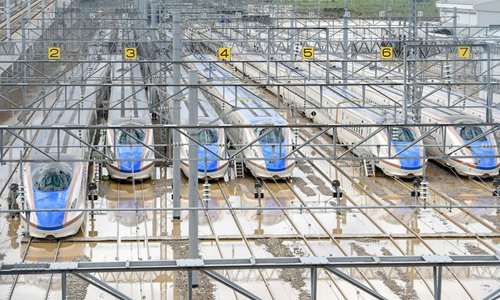HOME >> WORLD
Japanese flood disaster frays resilience of elderly victims
By Reuters Source:AFP Published: 2019/10/16 19:58:41

Photo taken on Monday shows Shinkansen bullet trains in Nagano Prefecture, Japan. (Xinhua/Hua Yi)
When a river in Japan's Fukushima prefecture overflowed on Sunday at the height of Typhoon Hagibis, 700 homes were flooded, many belonging to elderly residents too frail to clean up and repair their water-logged houses.
The death toll from Typhoon Hagibis rose to 74 on Wednesday, many of the victims having drowned after scores of rivers were inundated.
Fukushima prefecture has seen the highest number of casualties, and Prime Minister Shinzo Abe has pledged 710 million yen ($6.5 million) to help fund recovery efforts.
Fukushima is no stranger to disaster. In 2011, the area was struck by an earthquake that unleashed a tsunami on the coast and destroyed the Fukushima Daiichi nuclear plant.
But as Japan's population ages, the resilience of residents to deal with hardship in the disaster-prone country appears to be eroding.
"Elderly people have told me that they are ready to give up," said Kenichi Bamba, the head of Bridge for Fukushima, a volunteer group that had come to help with the clean-up.
"As Japan grows older, social networks that support communities will begin to break down. Something needs to be put in its place," he said.
Hiromi Nagasawa, a social welfare official in Date city in Fukushima prefecture, near where the Abukuma river burst its banks, said nearly all of the 170 people left in evacuation centers were old.
Posted in: ASIA-PACIFIC